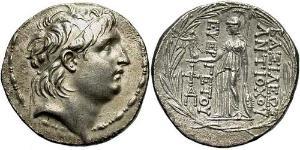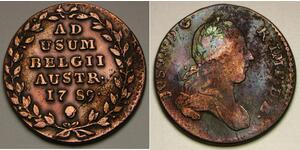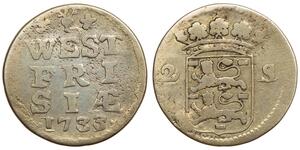Tetradrachms of Seleucid Empire
The Seleucid Empire, which existed from 312 BCE to 63 BCE, was one of the successor states to Alexander the Great's empire.
The Seleucid Empire was ruled by a succession of kings from its establishment in 312 BCE until its collapse in 63 BCE. Here are some of the notable rulers of the Seleucid Empire:
Seleucus I Nicator (312–281 BCE) - Founder of the Seleucid Empire and one of the Diadochi, the generals who succeeded Alexander the Great.
Antiochus I Soter (281–261 BCE) - Son of Seleucus I, known for his efforts to stabilize the empire after the Wars of the Diadochi.
Antiochus II Theos (261–246 BCE) - Son of Antiochus I, who expanded the empire's territory but faced internal strife and challenges.
Seleucus II Callinicus (246–225 BCE) - Son of Antiochus II, who struggled to maintain the empire's integrity against external threats and internal rebellions.
Antiochus III the Great (223–187 BCE) - Known for his military campaigns, including conflicts with the Ptolemaic Kingdom in Egypt and the Roman Republic.
Seleucus IV Philopator (187–175 BCE) - Son of Antiochus III, who faced financial difficulties and conflicts with Rome.
Antiochus IV Epiphanes (175–164 BCE) - Notable for his attempts to impose Hellenistic culture on the Jewish population, leading to the Maccabean Revolt.
Demetrius I Soter (162–150 BCE) - Son of Seleucus IV, who briefly regained control of the empire during a period of instability.
Alexander Balas (150–145 BCE) - Claimed to be the son of Antiochus IV, his reign was marked by civil war and conflict with rival claimants to the throne.
Demetrius II Nicator (145–138 BCE) - Son of Demetrius I, who faced internal rebellions and external threats during his reign.
Antiochus VII Sidetes (138–129 BCE) - Brother of Demetrius II, known for his military campaigns against the Parthians and his efforts to restore Seleucid power.
Demetrius III Eucaerus (95–88 BCE) - Son of Antiochus VII, who briefly ruled during a period of fragmentation and decline for the Seleucid Empire.
They issued tetradrachms, which were silver coins, as a part of their currency system. These tetradrachms were typically of high silver content and were used widely in trade throughout the Mediterranean and Near East during the Hellenistic period.
The design of tetradrachms of the Seleucid Empire varied over time and depending on the ruling dynasty. They often featured the portrait of the ruling monarch on the obverse (front) side and a variety of symbols, gods, or scenes on the reverse (back) side.
You may be interested in following coins
2025-05-25
- New coin is added to 2 Liard Austrian Netherlands (1713-1795) Copper
2 Liard Austrian Netherlands (1713-1795) Copper
group has 4 coins / 4 prices
⇑
AUSTRIAN NETHERLANDS 2 Liards 1789 - Copper - Joseph II. - VF+ - 1375 *
2025-05-24
- New coin is added to 2 Stuiver Netherlands Silver
2 Stuiver Netherlands Silver
group has 33 coins / 33 prices
⇑
Netherlands / West-Friesland - 2 Stuivers 1733




-300-150-N7QKX9ISGfEAAAFX9awaL_VH.jpg)




